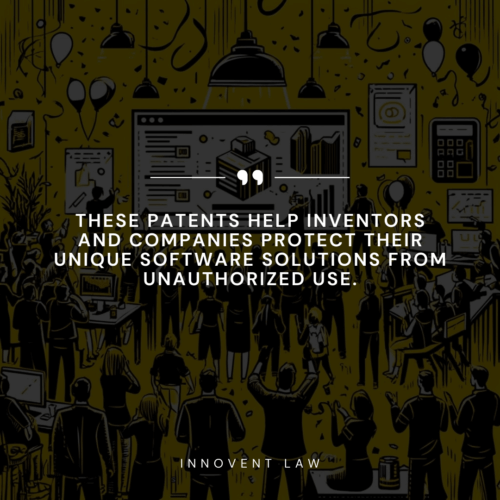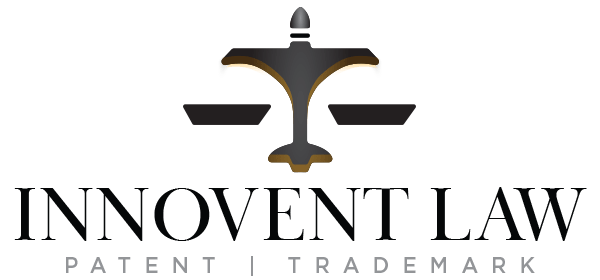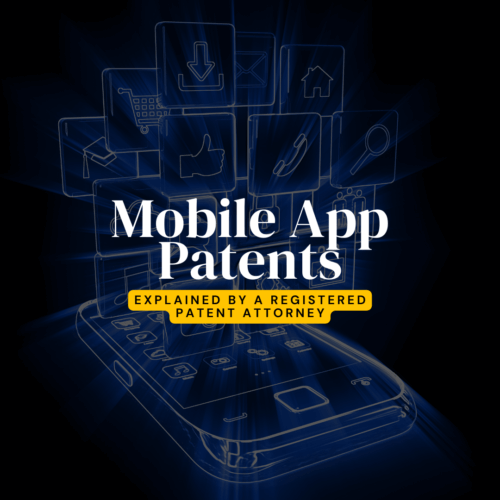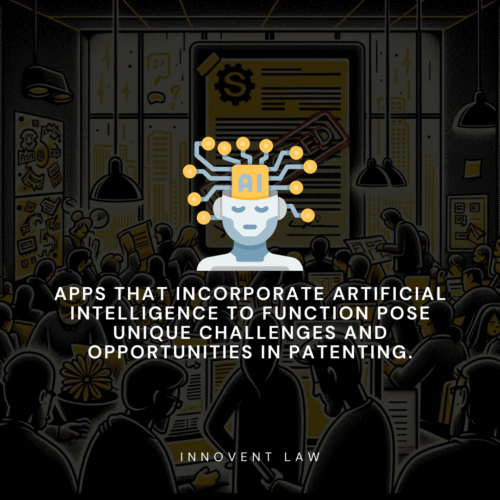What You Need To Know About Mobile App Patents
If you have been following us, you must know we are covering topics from artificial intelligence to software patents and now we would like to cover the topic of getting a patent for a mobile app. Tech as we know it’s growing and evolving really fast, especially in our mobile devices and mobile technology, understanding the ins and outs of mobile app patents has never been more crucial. This guide will dive into the different types of mobile app patents, the nuances of patenting app-related software, and the intersection of artificial intelligence and mobile apps in the patenting process.
About Mobile App and Software Patents Backgrounds
Mobile applications have transformed the technological landscape, prompting the need for specific legal safeguards like mobile app patents. These patents help inventors and companies protect their unique software solutions from unauthorized use. Software patents, including those related to mobile apps, cover a broad range of digital innovations, from simple utilities to complex AI-driven algorithms.
Different Types of Mobile App Patents
Do you know which type of patent you should apply for? Developers have several options, each serving a unique protective purpose. Understanding the types of patents available is essential for anyone looking to secure their mobile app comprehensively.
Utility Patents: Protecting Functionality
Utility patents are the most common type of patent for protecting mobile apps. These patents protect the app’s functional aspects — essentially, the way the app works. This includes the app’s processes, methods, or any unique system it uses to operate. For example, if your app uses a novel algorithm to streamline online transactions, this functional element could be protected under a utility patent. A look at the USPTO’s guidelines on software patents reveals various aspects of mobile app technology that qualify under utility patents, emphasizing the importance of how the technology is applied rather than the software code itself.
Design Patents: Safeguarding Visual Design
Design patents, on the other hand, protect the ornamental design of your app. This doesn’t cover the app’s functionality but rather its appearance. If your app has a distinctive, non-functional visual feature—such as a unique user interface layout or icon set—design patents can provide protection against copying by competitors. An example of a successful design patent can be seen in the protection of the layout of Apple’s iOS icons, which is a classic case where design patents have been effectively utilized to safeguard a distinctive visual design. The USPTO’s database provides numerous examples of design patents, showcasing the range of visual elements that can be protected.
Understanding These Distinctions
For developers and startups aiming to secure patents for their applications, it’s very important to understand the distinctions between types of patents. While a utility patent protects the way an app works, a design patent covers how it looks. In many cases, a robust IP strategy might involve obtaining both types of patents to fully protect the app against infringement.
By familiarizing themselves with the specific protections each type of patent offers, companies can better prepare their patent applications and enhance their chances of securing their mobile app’s intellectual property. Whether through utility or design patents, the goal is to ensure that both the functional and ornamental aspects of the app are well-protected, thus maintaining a competitive edge in the bustling app market.
Reference for Further Reading: For those interested in a deeper dive into the types of patents applicable to mobile apps, a visit to the USPTO’s official website provides detailed resources and case studies, helping developers understand and navigate the patent application process specific to both patent types effectively.

Should You Patent a Software?
Patenting software can be valuable, protecting your unique innovations from competitors. However, deciding whether a patent is worth pursuing depends on whether the software can maintain relevance over the patent’s life (20 years from the date of filing), given the rapid pace of technological change. Consider the potential return on investment and the specifics of patent law here.
Software Patents Examples: How Innovations in Tech Are Protected
When discussing the protection of software inventions through patents, examining real-world examples can provide valuable insights into how diverse applications of software are effectively patented. These examples not only illustrate the range of technologies that can be protected but also help clarify the criteria that make software patentable.
1. Data Compression Algorithms
One notable example involves data compression algorithms, which are essential for reducing the size of data files without losing quality. These algorithms are widely used in various industries, including streaming services and software development, making them a lucrative area for patents.
2. E-commerce Solutions
E-commerce platforms often utilize patented software to enhance user experiences and increase efficiency. For example, Amazon holds numerous patents on its 1-Click ordering process, which simplifies the checkout process for users, significantly boosting sales and customer satisfaction. This type of software invention is a prime candidate for patents due to its direct impact on commerce and user interaction.
3. Financial Technology Software
Fintech companies frequently secure patents for software that innovates financial transactions and services. For instance, software that enables blockchain technology or provides new methods for secure online transactions can be patented. These patents protect the intellectual property that sets these companies apart from competitors, emphasizing the importance of patents in maintaining a competitive edge. (examples of companies include State Farm, Mastercard, Capital One, Alipay, Wells Fargo)
4. Artificial Intelligence in Healthcare
AI-driven software solutions in healthcare, such as diagnostic tools or patient management systems, are increasingly being patented. These tools often involve complex algorithms capable of processing vast amounts of data to make predictions or recommendations that assist healthcare providers.
5. Mobile Applications
Mobile apps that introduce unique functionalities or algorithms can also be patented. Whether it’s a novel gaming concept or a unique mobile banking feature, patents ensure that the creativity and resources invested into developing these applications are safeguarded.
These examples underscore the broad applicability and crucial role of patents in protecting technological advancements across various sectors. By understanding these examples, developers and businesses can better navigate the landscape of intellectual property and consider how best to protect their innovative software solutions.
Is It Possible to Patent an Algorithm?
Yes, algorithms are patentable if they meet certain criteria set by the United States Patent Office (USPTO). An algorithm must have technical application, novelty, industrial utility, non-obviousness, and be more than an abstract idea. This means the algorithm must effect a transformation or reduction of a particular article to a different state or thing.
Patenting a Code: Is It Possible?
Is there a way to avoid getting my patent rejected as an abstract idea?
Patenting software code can be challenging as it must significantly contribute to a patentable invention beyond an abstract idea. Code that performs a unique function or solves a specific problem in a novel way is more likely to be granted a patent.
Mobile App Non-provisional Patents or Provisional Patents
Developers can choose between filing for provisional applications, which does not secure a patent but will provide a year to further develop the app and test the market, or non-provisional applications, aiming at securing patents but require detailed application materials and a more involved process. Deciding which route to take often depends on the stage of development and the strategic goals of the app creator.
Software or Mobile App Patents?
While software patents and mobile app patents overlap, the specifics might differ based on the application’s functionality and ornamental design. Understanding the scope of what can be protected under which category is vital for effectively and comprehensively securing your intellectual property.
What Happens If Your Mobile App Uses AI to Operate?
Apps that incorporate artificial intelligence to function pose unique challenges and opportunities in patenting. Artificial intelligence patents often require clear demonstrations of innovation in AI algorithms or how AI is integrated into the app’s functionality and hardware to be considered for patenting.
AI Mobile Apps
AI-driven apps, such as those that use machine learning to personalize user experiences or process large datasets for decision-making, are at the forefront of software patents. These applications must clearly illustrate how the AI enhances the app in ways that are non-obvious and novel.
Patent Eligibility
To determine if your mobile app is eligible for a patent, it must meet certain criteria set by the patent and trademark office. It should offer something more than a mere abstract idea; it must be a fully realized invention that is new, non-obvious, and useful.
Final Thought: Should I Patent My Mobile App?
Deciding whether to patent a mobile app often involves considering the app’s unique features, the competitive landscape, and the benefits of legal protection. While patents provide an effective barrier to entry for competitors, they also require a commitment of time and resources to obtain and maintain.
Is my mobile app patentable?
Securing a patent for your mobile app can offer significant advantages, especially in a marketplace teeming with innovation and competition. By understanding the various types of patents available and how they apply to mobile apps, particularly those enhanced by artificial intelligence, developers can not only protect their creative works but also enhance their market position. For more insights and guidance on navigating the patent process, visit Innovent Law’s detailed resources on avoiding common pitfalls in the invention process.


